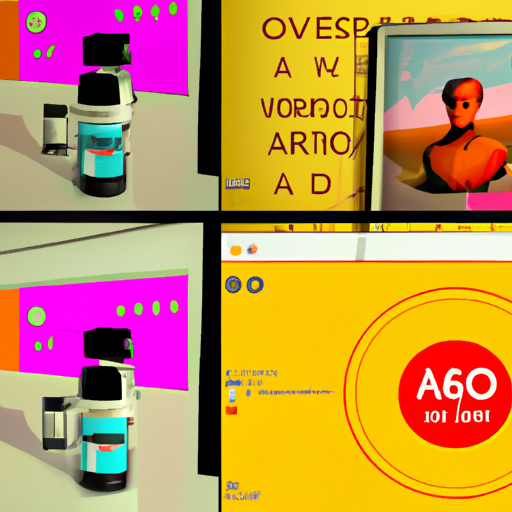-
Table of Contents
Designing AI-Driven AR Experiences for Brand Engagement
Augmented Reality (AR) has become an increasingly popular technology in recent years, allowing users to overlay digital content onto the real world. With the advancements in Artificial Intelligence (AI), the combination of AI and AR has opened up new possibilities for brands to engage with their audience in innovative and immersive ways. In this article, we will explore the concept of designing AI-driven AR experiences for brand engagement, and how it can revolutionize the way businesses interact with their customers.
The Power of AI-Driven AR Experiences
AI-driven AR experiences offer a unique opportunity for brands to create personalized and interactive engagements with their target audience. By leveraging AI algorithms, brands can analyze user data and preferences to deliver tailored AR content that resonates with individual users. This level of personalization enhances brand engagement by providing users with experiences that are relevant and meaningful to them.
For example, imagine a retail brand using AI to analyze a customer’s purchase history and preferences. With this information, the brand can create an AR experience that allows the customer to virtually try on different outfits or accessories, providing a personalized shopping experience from the comfort of their own home. This not only increases brand engagement but also improves the likelihood of a purchase.
Case Studies: Successful AI-Driven AR Experiences
Several brands have already embraced AI-driven AR experiences to enhance their brand engagement. Let’s take a look at some successful case studies:
1. IKEA Place
IKEA, the Swedish furniture retailer, launched the IKEA Place app, which utilizes AI and AR to allow users to virtually place furniture in their homes. By using the app, customers can see how different pieces of furniture would look and fit in their space before making a purchase. This AI-driven AR experience not only increases brand engagement but also reduces the likelihood of returns, as customers have a better understanding of how the furniture will look in their home.
2. Sephora Virtual Artist
Sephora, a leading beauty retailer, introduced the Sephora Virtual Artist app, which uses AI and AR to enable users to try on different makeup products virtually. By analyzing a user’s facial features, the app can accurately apply different shades of lipstick, eyeshadow, and other cosmetics. This AI-driven AR experience allows customers to experiment with different looks and find products that suit them best, ultimately increasing brand engagement and driving sales.
Design Principles for AI-Driven AR Experiences
When designing AI-driven AR experiences for brand engagement, there are several key principles to consider:
- Personalization: Tailor the AR content to individual users based on their preferences and behaviors.
- Interactivity: Create interactive elements within the AR experience to engage users and encourage participation.
- Seamlessness: Ensure a seamless integration of AI and AR technologies to provide a smooth user experience.
- Usability: Design the AR experience to be intuitive and user-friendly, allowing users to easily navigate and interact with the content.
- Value: Provide value to users through the AR experience, whether it’s by offering useful information, entertainment, or solving a problem.
The Future of AI-Driven AR Experiences
The potential for AI-driven AR experiences in brand engagement is vast and continues to evolve. As AI algorithms become more sophisticated and capable of analyzing vast amounts of data, brands will be able to deliver even more personalized and immersive AR experiences to their customers.
Furthermore, advancements in AI and AR technologies will likely lead to the development of more intelligent and context-aware AR experiences. For example, AI algorithms could analyze a user’s location, weather conditions, and personal preferences to deliver AR content that is highly relevant to their current context.
Summary
Designing AI-driven AR experiences for brand engagement offers a powerful way for businesses to connect with their audience on a deeper level. By leveraging AI algorithms, brands can create personalized and interactive AR content that resonates with individual users, ultimately increasing brand engagement and driving sales. Successful case studies, such as IKEA Place and Sephora Virtual Artist, demonstrate the effectiveness of AI-driven AR experiences in enhancing brand engagement. As AI and AR technologies continue to advance, the future holds even more exciting possibilities for creating immersive and context-aware AR experiences.
